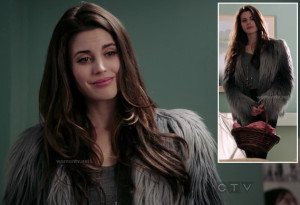Look—there she goes, the girl in the red hood, red cape, red hoodie, wolfskin. Do you see her? Does she carry a basket full of fresh bread and warm milk? Or does she seek to protect her sweet, sweet tortitas from the dapper wolf? And when she meets that wolf, does she reveal her own small, experienced fangs? Or whip a pistol from her knickers?
Hello, my name is Lauren, and I’m a Little Red Riding Hood addict. Fortunately, I’m enabled both by my MFA thesis (Little Red Riding Hood-centric, of course) and by being a blogger for fairytales.byu.edu. This is an outreach to all the other fairy tale addicts who have discovered what fairy tales can tell us about our lives, cultures, and dogmas.

But back to Little Red Riding Hood. I love everything about the tale, from the early French oral narratives of bzous to Italian tales of cannibalistic ogres to German axe-happy huntsmans to Angela Carter’s red-hooded vixen. I even just love picturing Little Red Riding Hood: little girl, dark forest, bright red of her cloak blooming like a poppy. Then that picture morphs and Little Red is wearing leather pants, stilettos, an ombre faux fur jacket—it’s Ruby Lucas from ABC’s Once Upon a Time. Again, Little Red, but with a hair bow twice the size of her blonde wig, a frilled bellyshirt, and polka dot bellbottoms—it’s Carol Burnett’s “La Caperucita Roja”.

And once more, I try to picture my bae Little Red but it morphs into my red-caped girls Buffy Summers and Piper Halliwell. Television has shaped how I see Little Red Riding Hood the girl, and how I see “Little Red Riding Hood” narratives and texts (and in some ways it’s supplanted the narratives and texts).
It’s for this purpose fttv.humwp.byu.edu traces, trace, tracks, and interprets the ways fairy tales show up on the small screen through data visualizations and textual analysis. For instance, “Little Red Riding Hood” aggregately shows up in series’ episodes or TV movies with more frequency than “Sleeping Beauty” or “Beauty and the Beast” but it still takes third place behind “Snow White” and“Cinderella”. We can see this data visualized and then ask, why does the public conscious adore and connect with “Cinderella”? An answer could be it’s close connection with the American Dream and the underdog. Let’s push further and look at more charted data: why are single episodes of the “Little Red Riding Hood” tale occurring less than single “Cinderella” tales but “mashup” episodes contain more “Little Red Riding Hood” references than “Cinderella” references? Or why, for example, did “Little Red Riding Hood” tales see a surge on television in 1960? And see that surge again in 2012?
With the twin pillars of education and research as our goalpost, we seek to answer these questions, and much more! We are lovers of fairy tales, addicts of fairy tales, and this is our conclave. Please join us with your questions, comments, and input as we follow our curiosity to Grandmother’s house.
Leave a comment